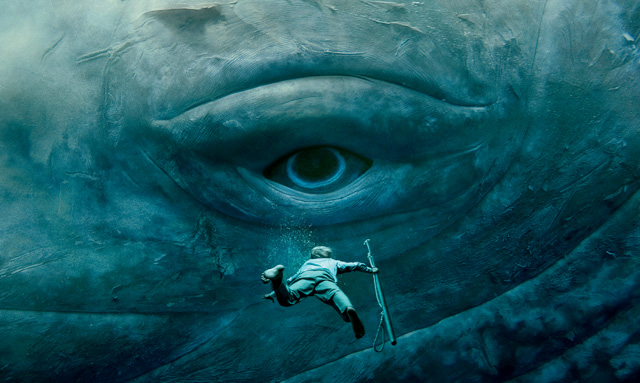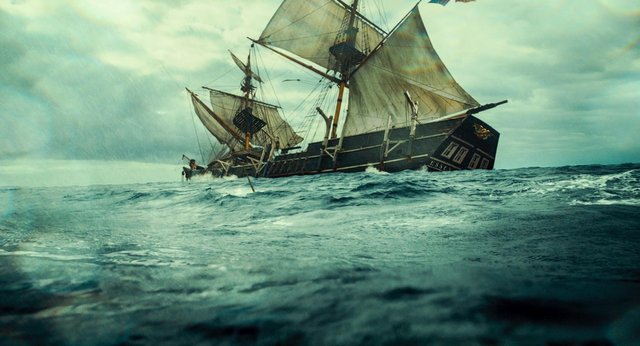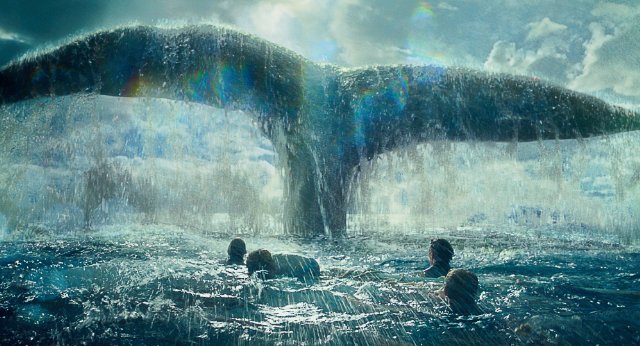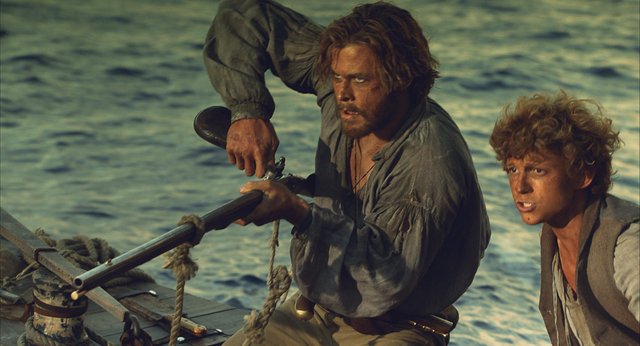The Inspiration Behind The Story of Moby Dick
Everyone knows the story of the Great White Whale Moby Dick, the whale that turned the tables on Captain Ahab, leaving him with one leg and a burning white hot hatred of the whale.
Few of his readers, however, probably realize Herman Melville's sea classic was based on the true story of the whaling ship Essex, a story that in many ways was more bizarre than its fictional offspring.

In August 1819, the Essex and her 21-man crew set out from Nantucket for the rich whaling grounds of the South Pacific. Most of the crew was made up of experience Nantucket whalers.
The rest were made of "coofs," or inexperienced seamen from outside Nantucket, and a few black sailors.
Over hunting had left the Atlantic's whaling grounds barren of sperm whales, forcing the Essex's captain, George Pollard, Jr., to take his vessel through the treacherous passage around Cape Horn into Pacific waters.
By 1819, however, even the whaling grounds of the Chilean and Peruvian coasts had been depleted. Captain Pollard's plan was to sail the Essex further into the Pacific to a new hunting ground where few Nantucket whalers had dared to venture.
Nearly 2,000 miles from the South American coast, these new waters were called the "Offshore Grounds." Essex's first mate, Owen Chase, described them as "almost untraversed ocean."
Voyage Started Badly
The voyage went badly nearly from the start. Only a few days after setting out, a gale blew the Essex over on her beam ends, and two of the five whale boats were lost. More storms followed, especially while rounding the "Horn."
Essex completed her southern passage in January and, after months of hunting in coastal waters, set sail in October 1829 westward to the Offshore Grounds. Arriving there in November, Essex found the new hunting ground rich in sperm whales. But on November 20, the hunters became the hunted.

That day all three whaleboats were pursuing whales. One commanded by Chase steered too close to a whale and was damaged by a strike from its tale. Returning to the Essex, Chase and his boatmen were making hasty repairs to their boat when they spied a whale off the portside.
It was a large bull sperm whale, about 85-feet in length. After seeming to size up the Essex, the bull made run directly at the ship. The first mate barely had time to order the helmsman to turn the ship when the great whale struck, knocking every crewman off his feet, and leaving a gapping hole in the hull.
The Essex began settling by the bow and Chase ordered the crew to man the emergency pumps.
"Rage and Fury"
Chase watched as the whale swam several yards away and stop, stirring up the sea with constant, angry movements. "I could distinctly see him smite his jaws together," Chase later wrote, "as if distracted with rage and fury." Then, with a speed estimated by Chase as six knots, the bull again slammed into the ship, splintering the oak timbers of her port bow.
The massive whale heaved its tail up and down, pushing the Essex backward, forcing sea water over the transom.
The first mate and his boatmen scrambled into a spare boat and rowed away from the stricken ship. Approaching in a whale boat, Captain Pollard hailed his first mate and asked, "My God, Mr. Chase, what is the matter?"

"We have been stove by a whale," the first mate answered.
Never before in history had a whale been known to attack a ship. As bizarre as the attack was, however, the ordeal of the Essex crew was just beginning.
Captain Pollard gathered his crew into the three whale boats. At most, the small boats held enough food and water for 60 days, but only if it were strictly rationed. The nearest land was the Marquesas and Society islands about 1,200 miles to the west.
But none among the Essex crew had any knowledge of these islands, and they feared they might be inhabited by hostile natives.
Captain Pollard decided to sail southeast on a course he hoped would take them to the Chilean coast 1,800 miles distant. Pollard hoped with good winds and good luck, they would reach the coast before their supplies ran out.
Unfortunately, the crew of the Essex experienced neither good winds nor luck.

Unbearable Thirst
Frequent storms threatened to sink the three whale boats. Seawater leaked into their supply of hard tack, rendering it inedible. Between storms, the sun baked their skin and thirst became unbearable. After a month adrift, the boats happened on an unpopulated island where they found food and water.
After restocking their supplies, the boats set out again, leaving behind three men who chose to take their chances for survival on the island.
Three more months dragged on for the men in the small boats. One night during a storm, the boats became separated. One would never be heard from again.
For weeks, First Mate Chase's boat sat becalm in a windless sea. Men began to die. The first was a white sailor, whose body was buried at sea. The next men to die were black. Facing death by starvation, Chase made a dreadful decision. "I addressed (the survivors) on the painful subject of keeping the body for food! …
It was without any objection agreed to…"
The decision kept the men alive until they were discovered on February 18 off the Chilean coast by a passing brig, the Indian.

Drawing Lots
The men aboard Captain Pollard's boat faced a similar decision. One by one four sailors died, and as they did, their bodies were consumed. When these were gone, the four remaining survivors made an even more horrific decision:
They drew lots to see who should be killed to feed the others. A sailor named Owen Coffin made the sacrifice.
A few days later, another seaman died – this time of exposure. The two remaining survivors in the boat – Pollard and Charles Ramsdell – fed on these two bodies until they were found by the whaling ship Dauphin on February 23.
Of the 21-man crew of the Essex, only five survived the ordeal in the boats. Later, the three men who remained on the island were also rescued.
A year after their rescue, Owen Chase published a book on the ordeal. Whaling veteran and aspiring writer Herman Melville would learn of the attack on the Essex and use it as the basis for his nautical classic about an aggressive white whale and a sea captain obsessed with revenge.
Images are screenshots from the movie In the Heart of the Sea
Sources:
Owen Chase - The Wreck of the Whale Ship Essex
Nathaniel Philbrick - In the Heart of the Sea